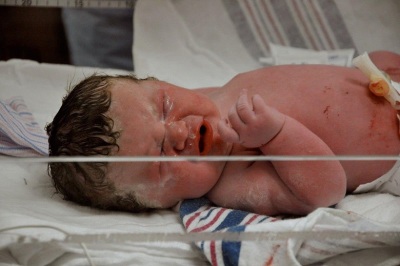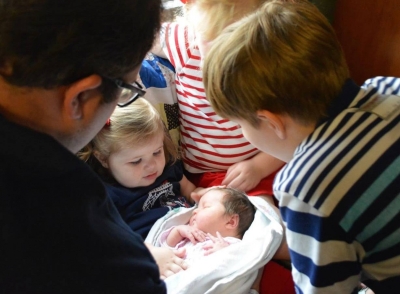As matrimony dips & marriage is redefined, U.S. birth rates plummet

NASHVILLE, Tenn. (Christian Examiner) – The CDC's National Center for Health Statistics announced this month the U.S. birth rate reached an all-time low in 2013, a sixth straight year of drops since a peak in 2007.
In raw numbers, there were 3.93 million babies born in the U.S. last year, down less than 1 percent from 2012, but 9 percent lower than 2007, when a record-breaking 4.32 million babies were born in the U.S.
The total number of births represents a rate of 62.5 babies per 1,000 women between the ages of 15 and 44, according to the report. That is 10 percent off the birth rate in 2007, which was 69.3 per 1,000 women, and a record low since the government started tracking these statistics in 1909 when the figure was 126.8 per 1,000.
Earlier this year the CDC released total fertility rate information that gives a more plain reading of the situation. TFR is the average number of births to women of child bearing age. In a developed country, a rate of 2.1 is needed to sustain a population at its current size – essentially, a child is born as a replacement for each parent.
In May, the CDC reported that metric fell to 1.87 births per woman of child bearing age in the country, the lowest level since 1986, and well below the 2.1 rate reported for 2007. At 2.4, the average births for Latina women remains above replacement level, but this number is a plunge from the 3.0 TFR reported for the 1990's. Among African-American women, the average number of births has continued to slide below levels needed to maintain a steady population, to 2.0, joining White and Asian women in that regard, whose TFRs are 1.8 and 1.7, respectively.

Downward birth trends also are a factor of age, but not as some might expect for the various ages. Births actually increased among older American women and fell among Millennials. In fact, 2013 birth rates for women ages 35 and over were "at the highest levels seen in approximately 50 years," the researchers wrote.
-- The rate for women ages 45 to 49 increased from 0.7 to 0.8 per 1,000, but was unchanged for women ages 40 to 44, at 10.4 births per 1,000.
-- Women ranging between 35 and 39 years old experienced 49.3 births per 1,000, and for women ages 30–34, the rate reached 98 births per 1,000, both small increases from the previous year.
-- For those 25-29, the rate dropped less than 1 percent, 106.5 to 105.5 births per 1,000.
-- Rates also declined by 3 percent for women ages 20 to 24, continuing the general decline of birth rates for women under age 25 over the last two decades.
-- Among teenagers, the birth rate fell 10 percent from 2012, dropping to 26.5 births per 1,000.
The economy, MTV's teenage pregnancy and women waiting until education and career milestones are met are among the reasons cited for the generational differences.
But there also is a generational divide regarding attitudes toward marriage that also may be in play.
In a 2014 Pew Research Center survey, 67 percent of Millennial adults, 18-29 years old, said there were more important priorities for society than marriage and having children.
Only 46 percent of the other generational cohorts combined had such low regard for nuptials and babies, and as expected, there were "step" differences from generation to generation, with older Americans having much higher value for establishing homes and families.
RELATED ARTICLES:
Same-sex marriage surges while matrimony overall dips
UN makes dire climate change forecast based on bad population numbers